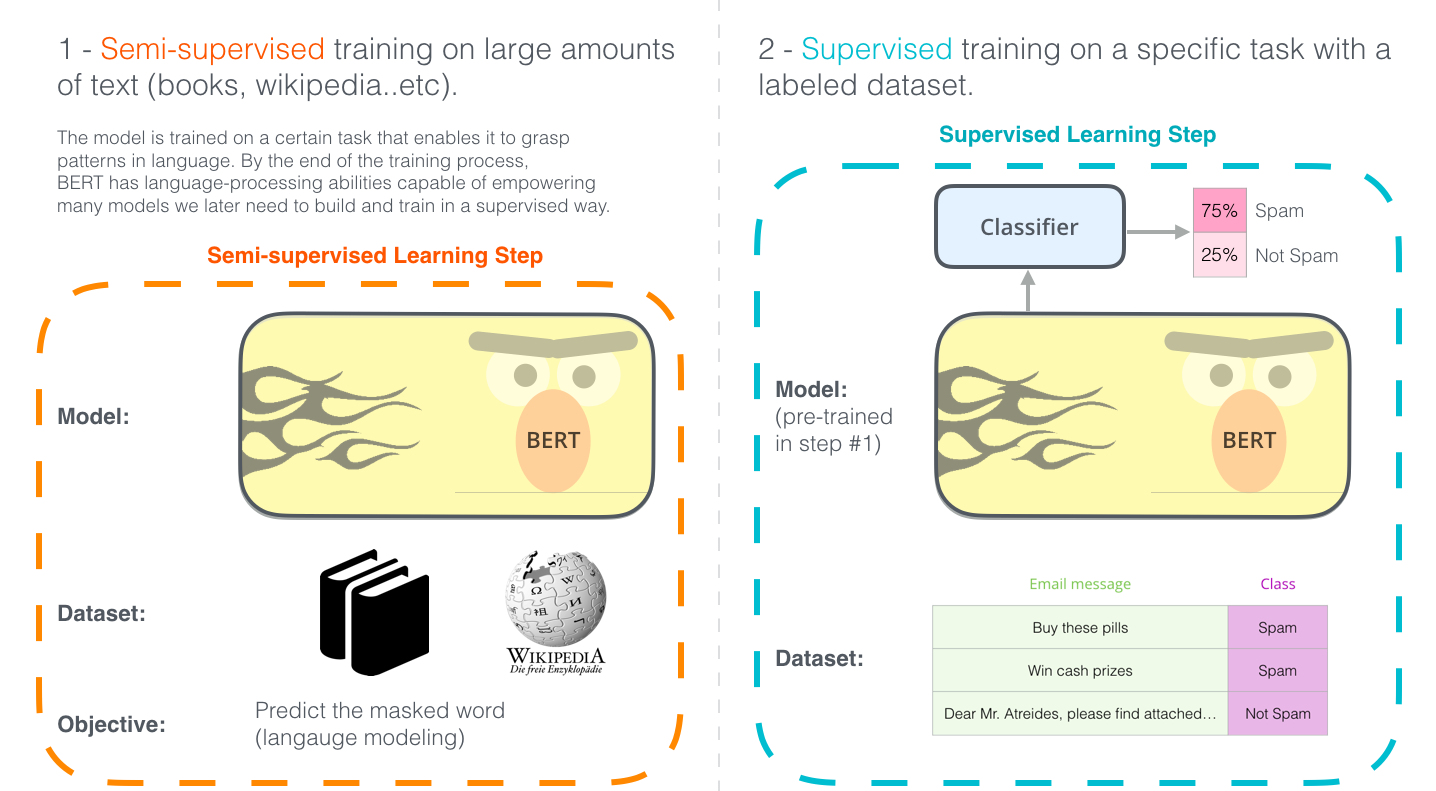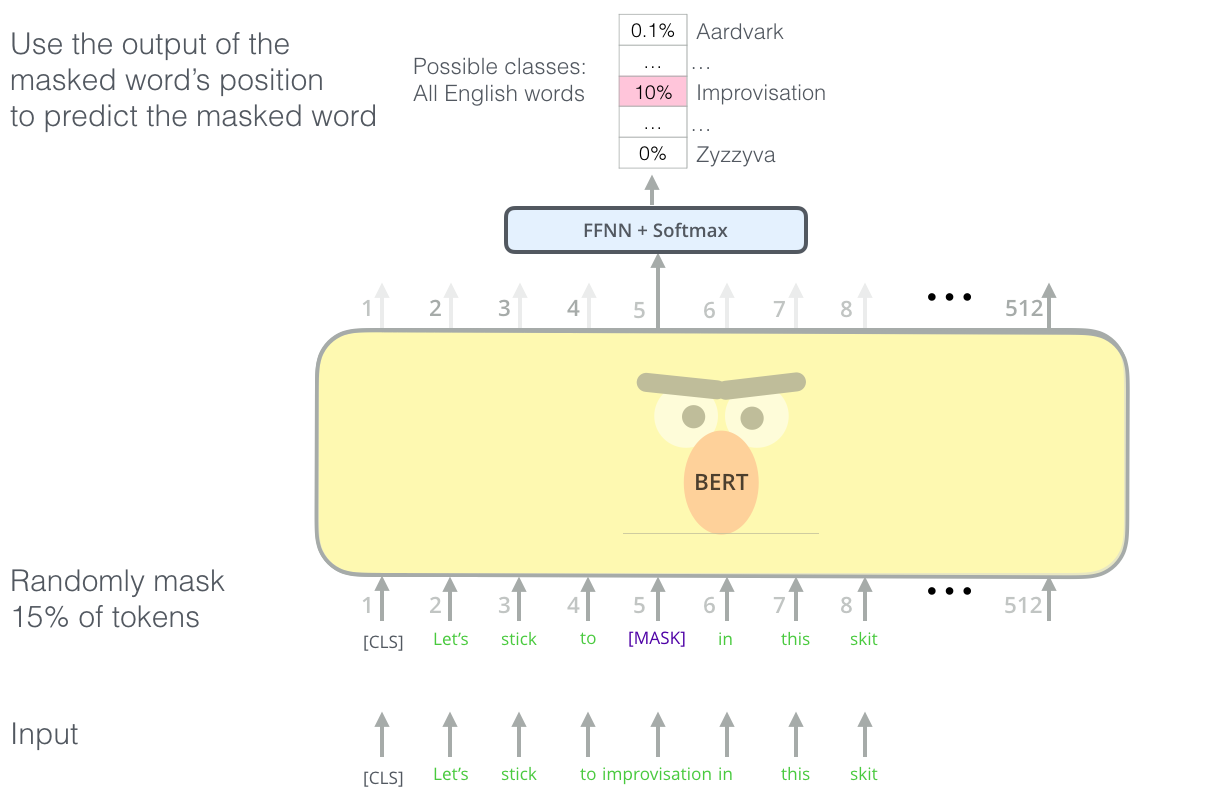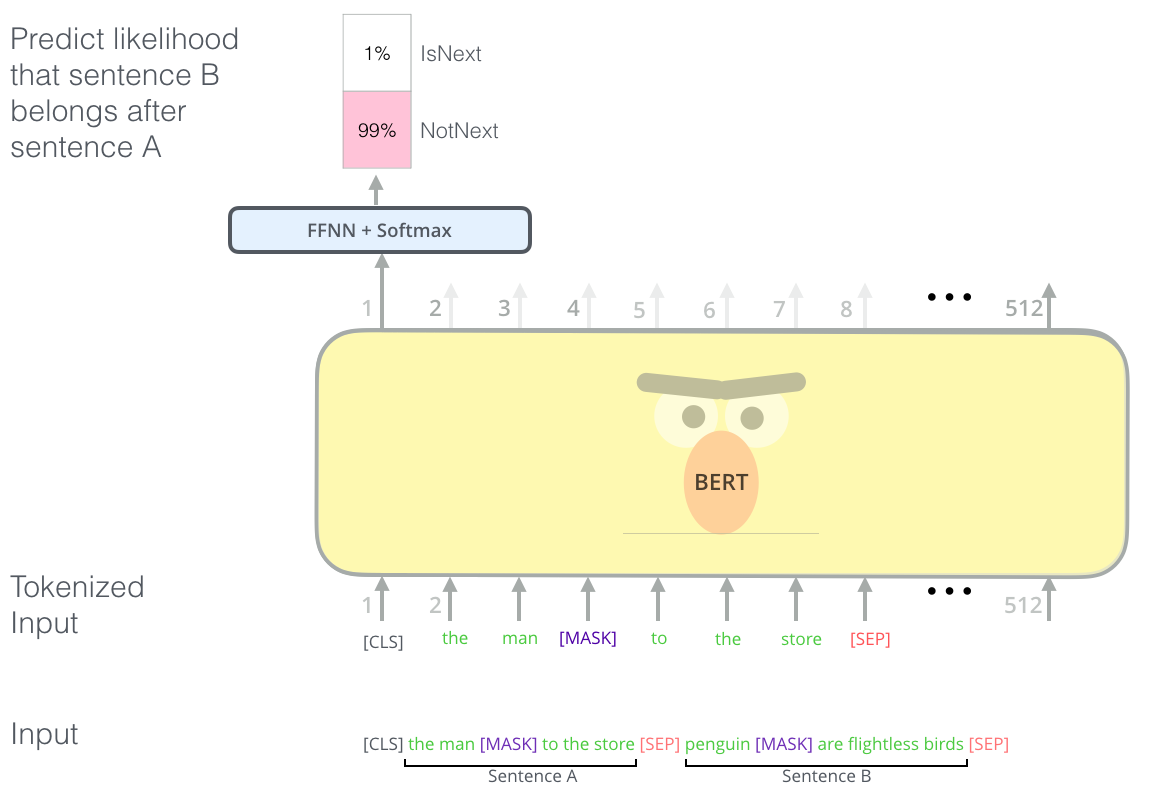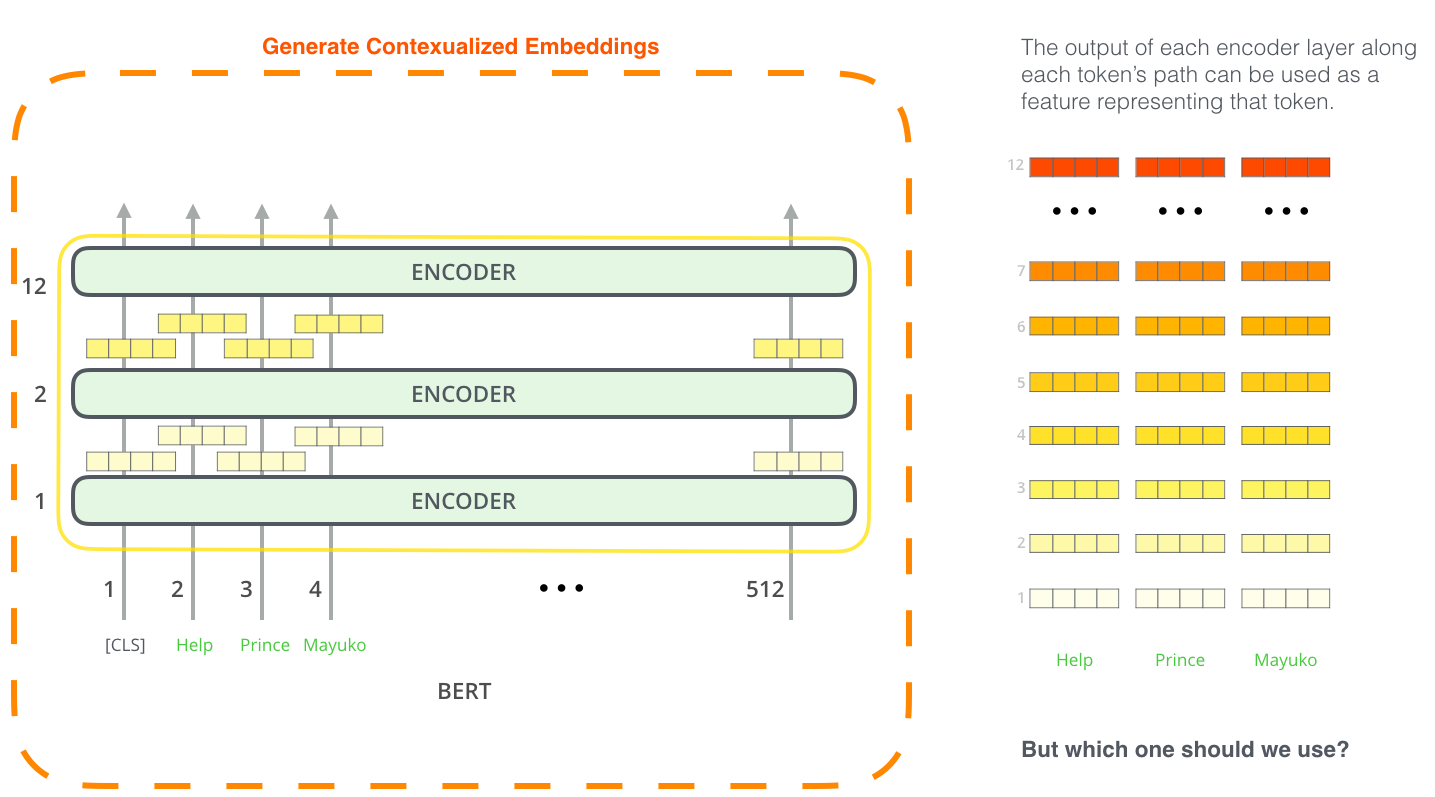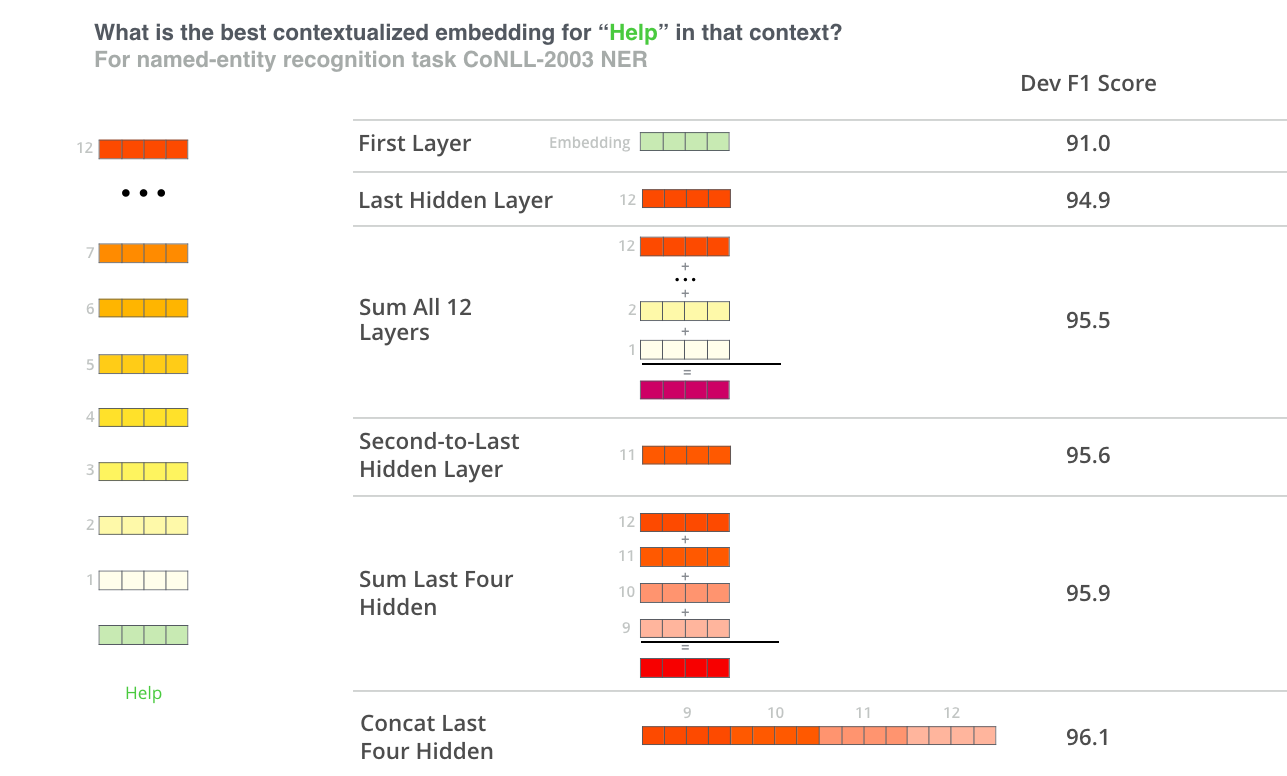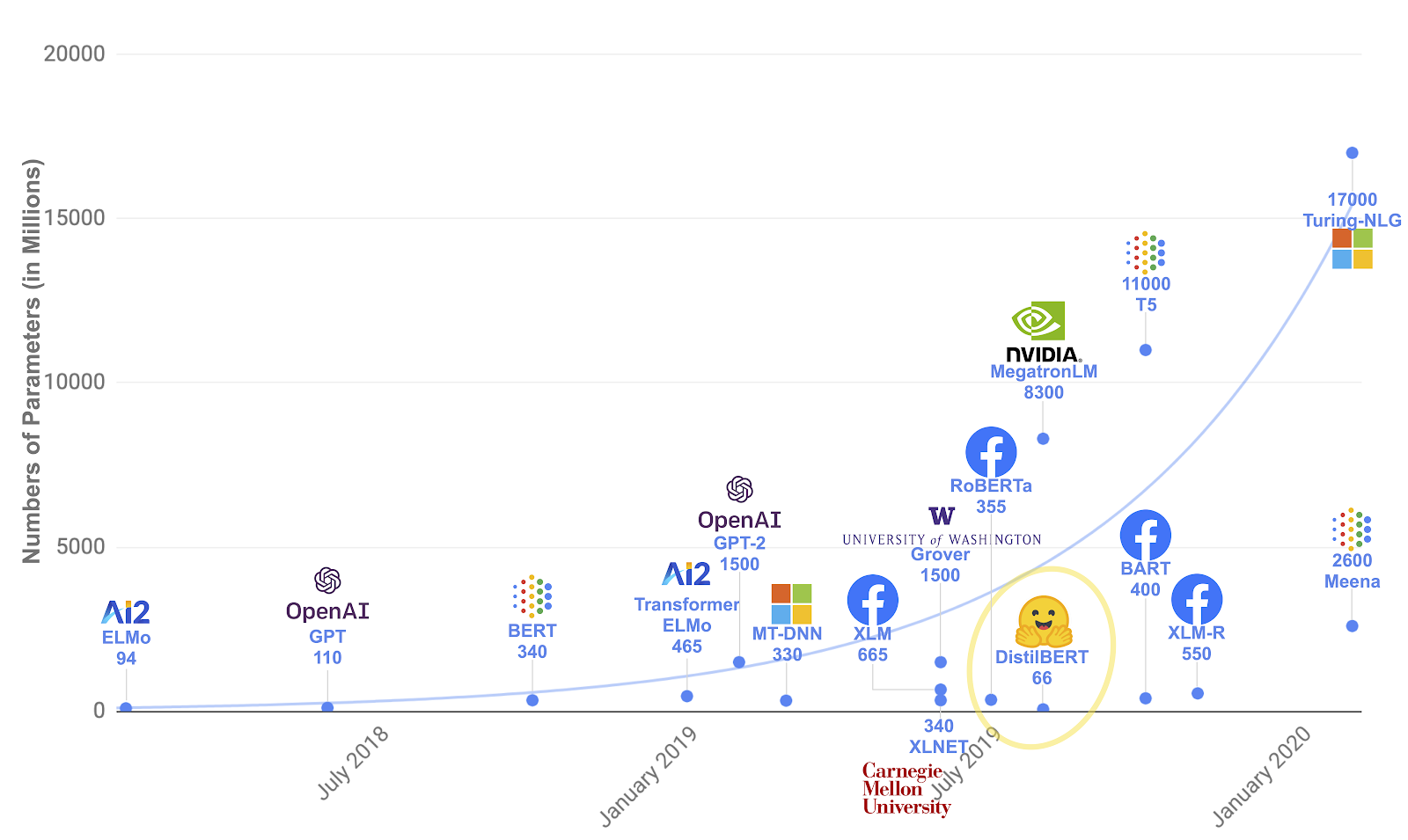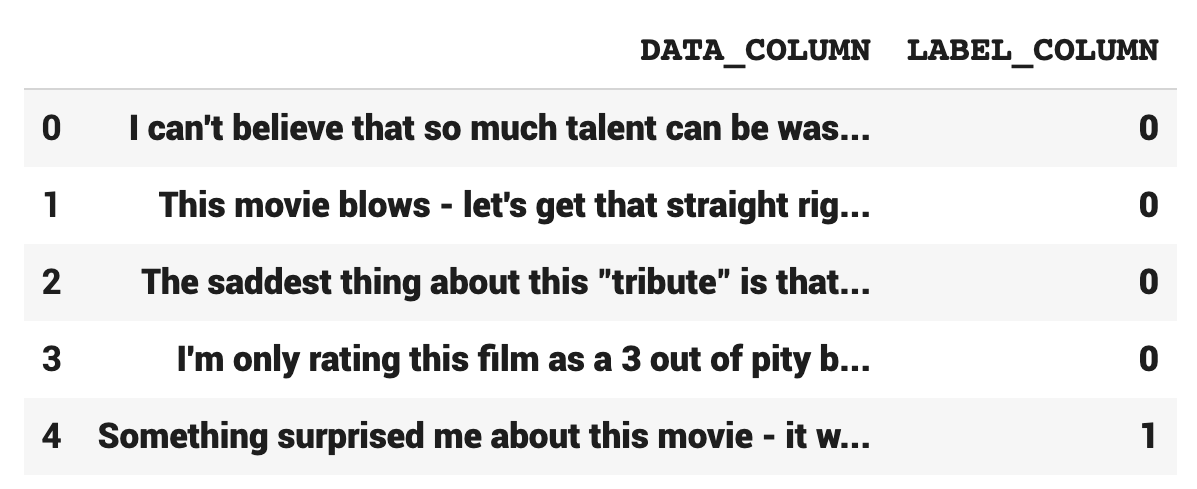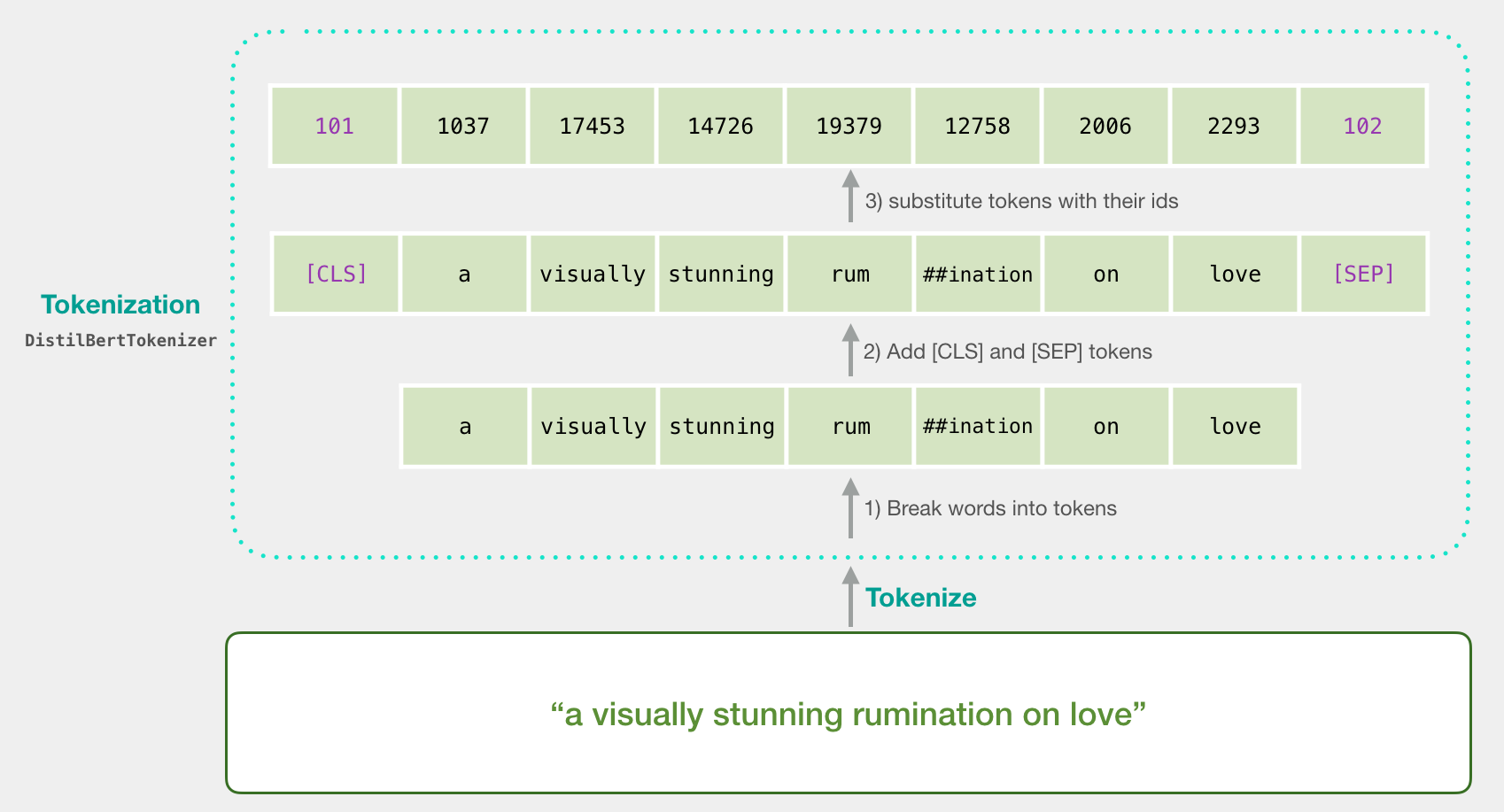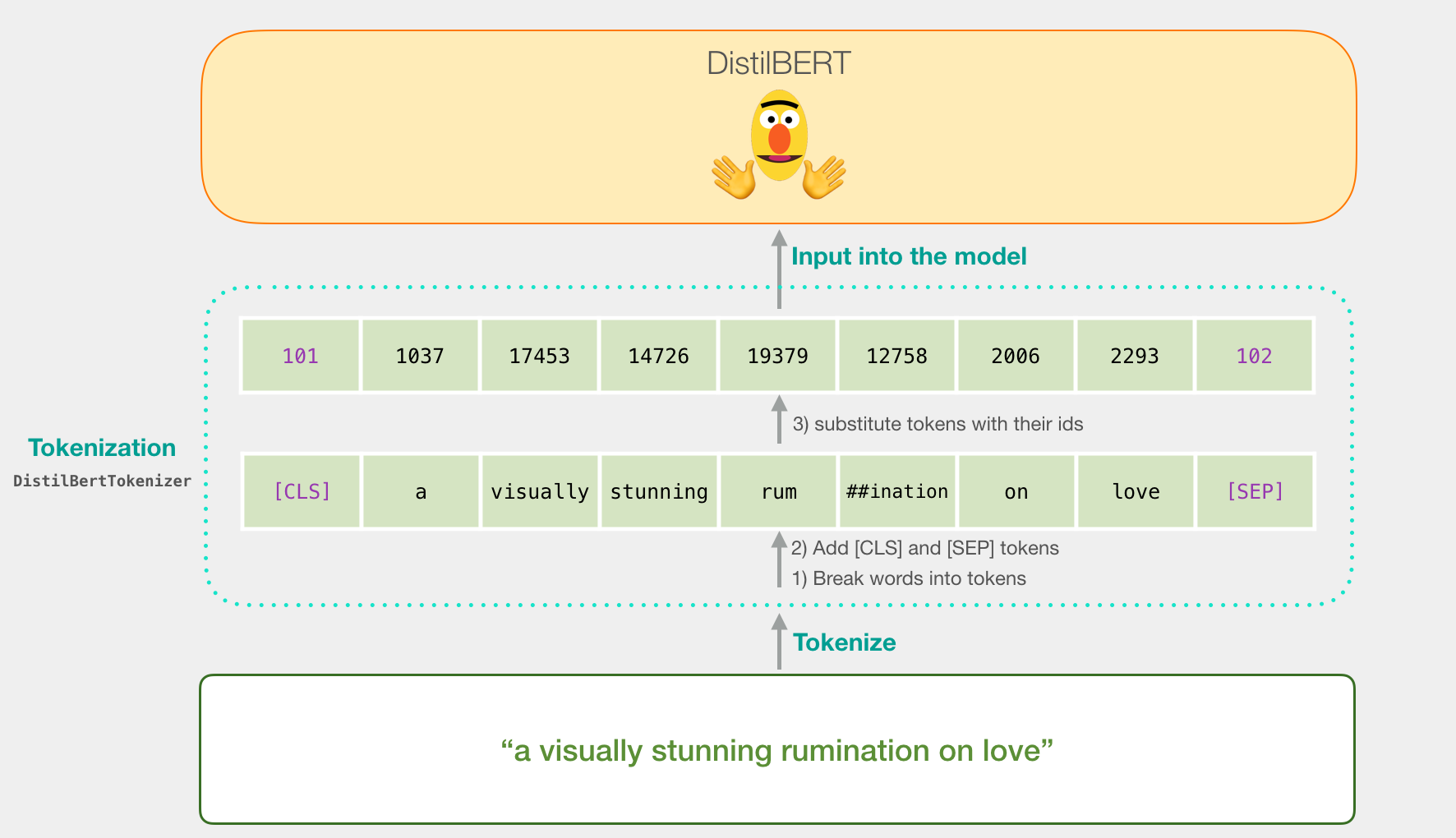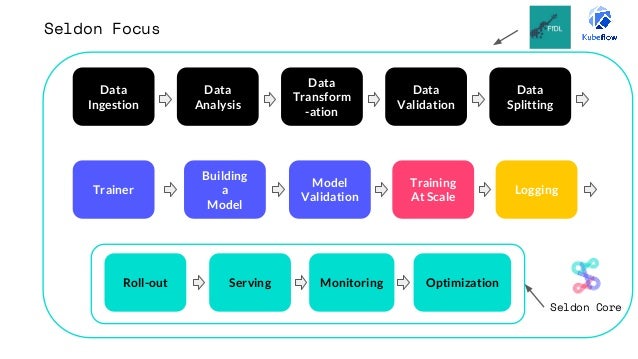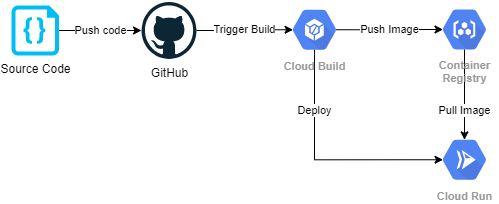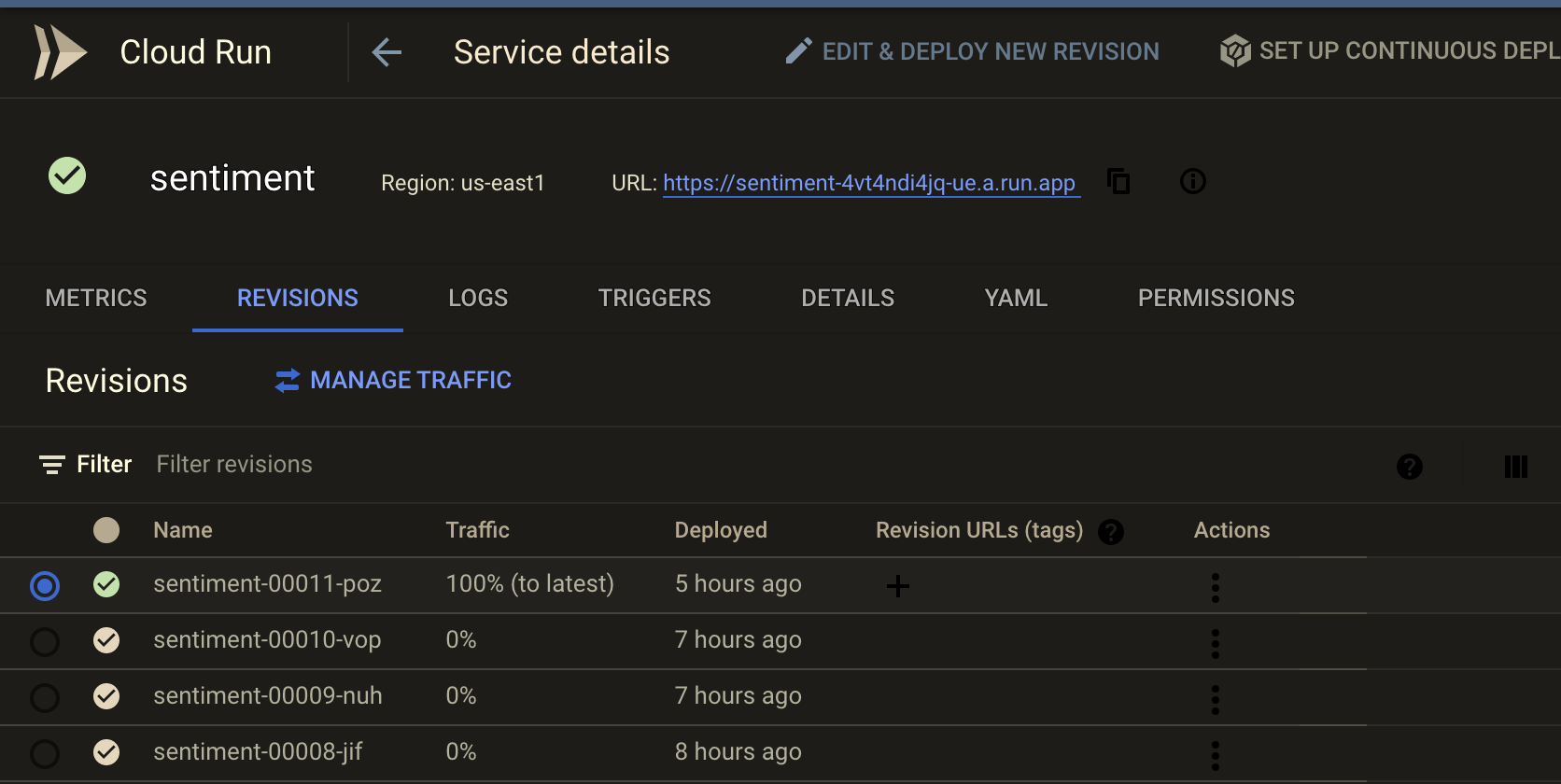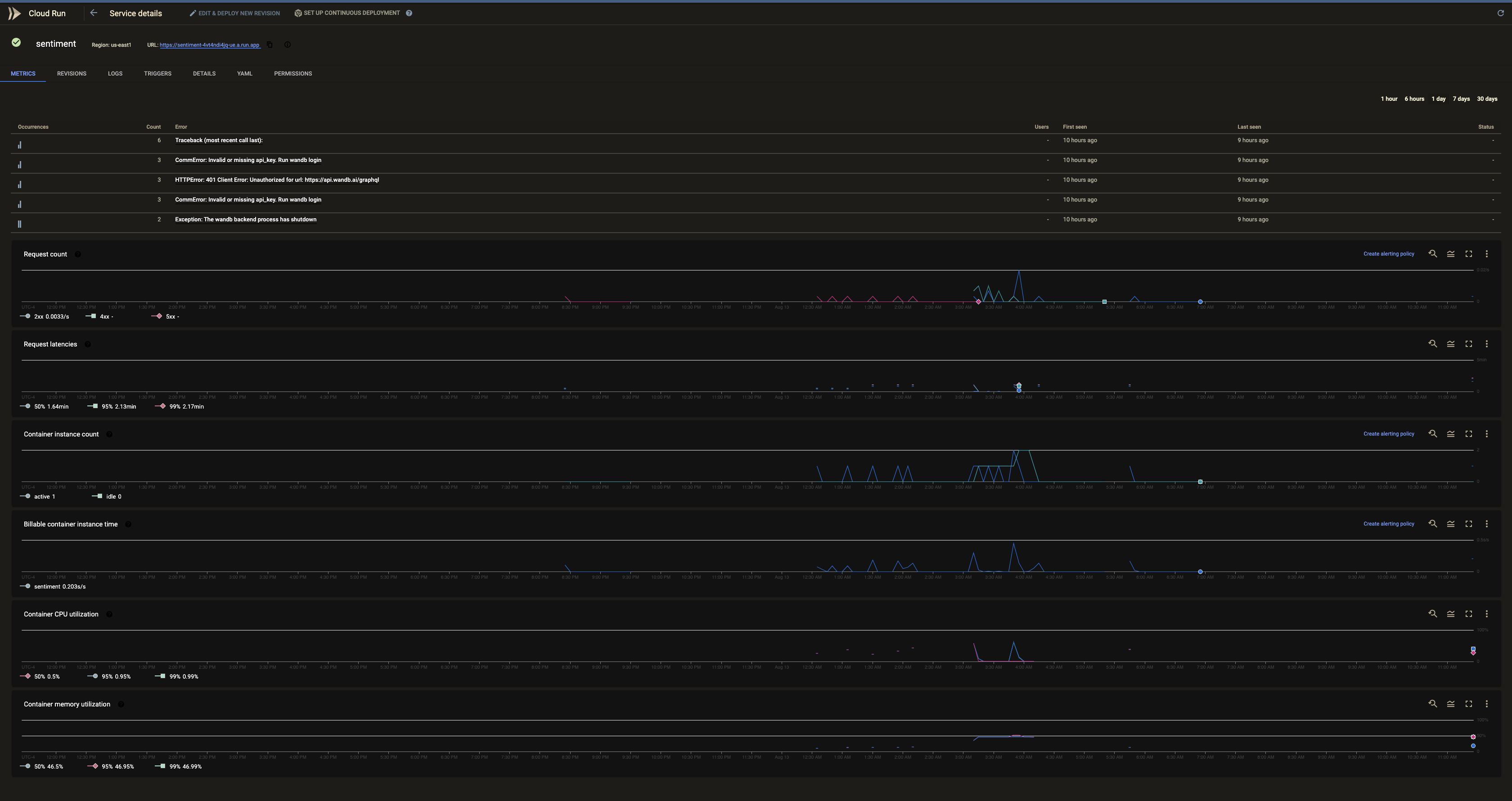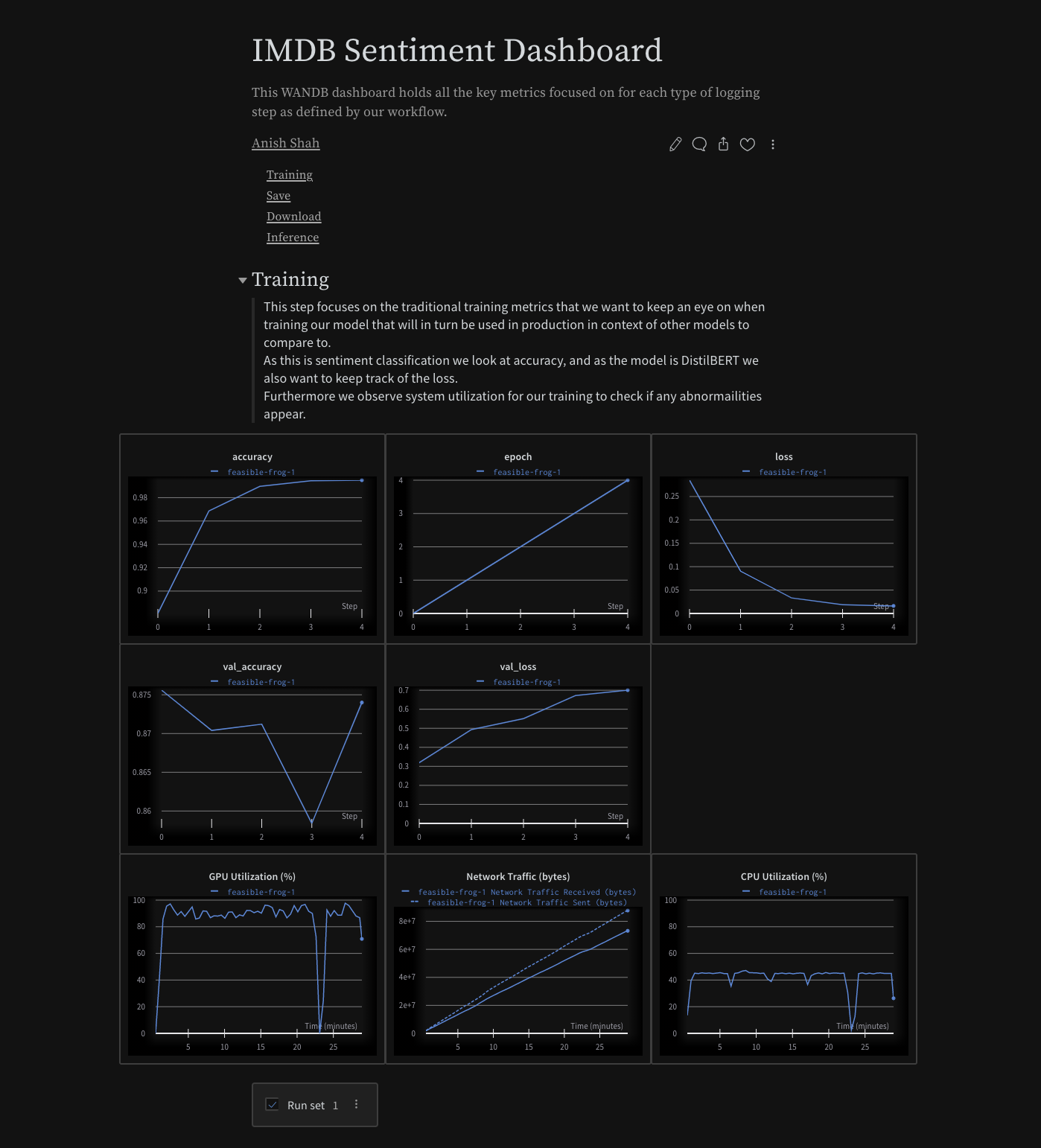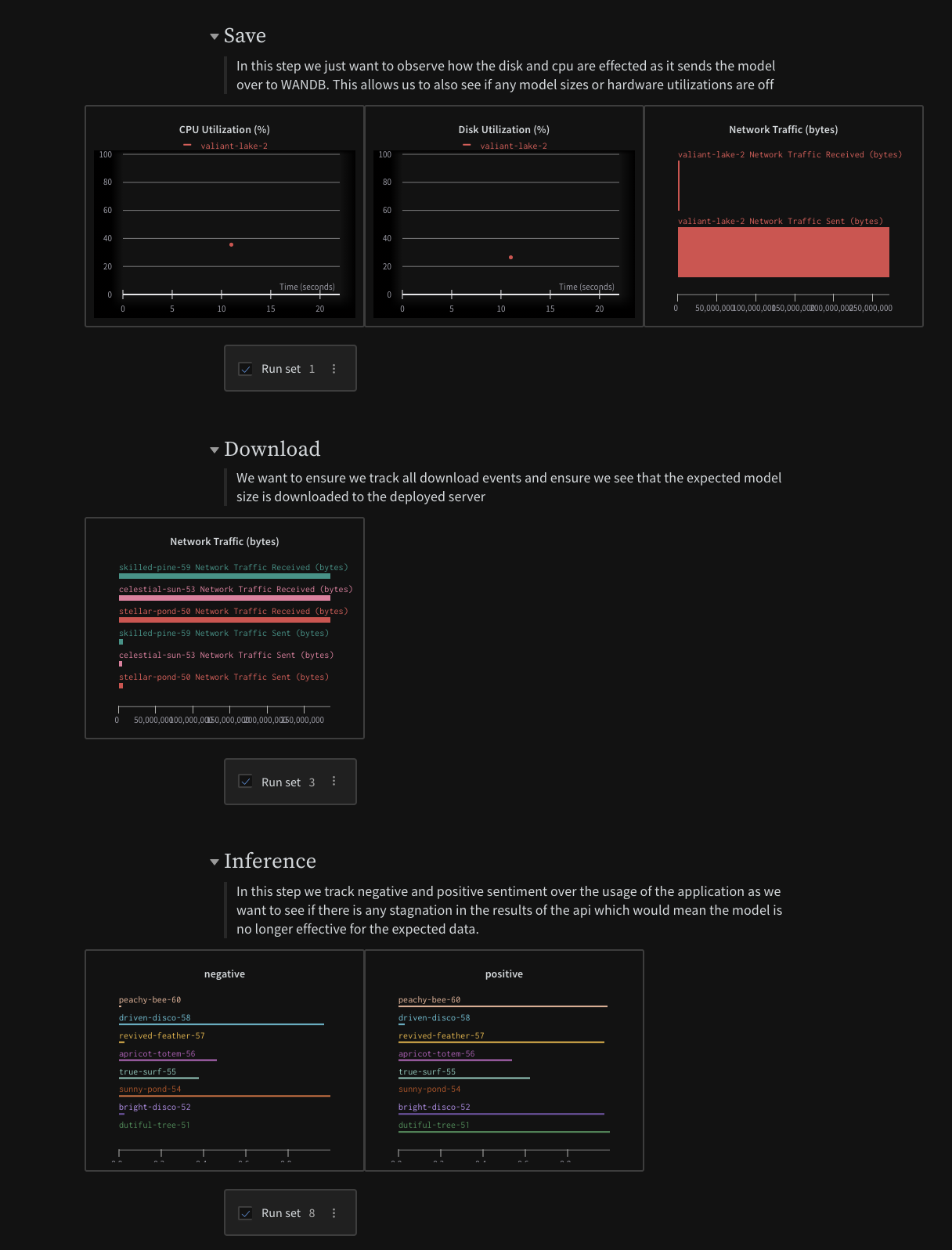Midterm submission for Anish Shah 4B Midterm assignment.
In this assignment we will be showing an end to end CI/CD flow for the deployment of binary (negative/positive) sentiment models trained on the IMDB dataset.
Note: As this is build using Cloud Run, the initial query may be slow as it needs to setup the server again due to its ephemeral nature
Note: It is best to make a copy of the colab and then run it locally to setup and recreat the experiment
Task 1 (25 points): Create a ML model that sentence sentiment classification for the data set mentioned above. For the NLP text you may consider binary classification ONLY (positive or negative sentiment). You can apply transfer learning to reuse existing model weights. Provide clear documentation of the number of classes, samples and data distributions (Exploratory data analysis) with this task.
Task 2 (25 points): Setup online ML monitoring for the Deployed model (WANDB). Report the metrics that you will monitor for your task.
Task 3 (35 points): Package and Dockerize the ML model using FastAPI. You may design any front end or may not use a front end at all as you see fit and deploy to GCP.
Task 4 (15 points): Create a Continuous deployment pipeline for the application so that updated models can be readily deployed.
For this task we are to perform sentiment analysis on raw IMDB comments that have already been labeled with a positive/negative sentiment rating. Below is an image that shows how one may approach the problem of sentiment analysis via two different lenses of machine learning engineering.
In our approach we utilize the DistilBERT Transformer architecture to perform the task.
Use your imagination and replace the word
SpamwithPositive
BERT is method of pre-training language representations, meaning that we train a general-purpose "language understanding" model on a large text corpus (like Wikipedia), and then use that model for downstream NLP tasks that we care about (like question answering). BERT outperforms previous methods because it is the first Semi-supervised, deeply bidirectional system for pre-training NLP.
Semi-supervised means that BERT was trained using only a plain text corpus, which is important because an enormous amount of plain text data is publicly available on the web in many languages.
Pre-trained representations can also either be context-free or contextual,
and contextual representations can further be unidirectional or
bidirectional. Context-free models such as
word2vec or
GloVe generate a single "word
embedding" representation for each word in the vocabulary, so bank would have
the same representation in bank deposit and river bank. Contextual models
instead generate a representation of each word that is based on the other words
in the sentence.
BERT was built upon recent work in pre-training contextual representations —
including Semi-supervised Sequence Learning,
Generative Pre-Training,
ELMo, and
ULMFit
— but crucially these models are all unidirectional or shallowly
bidirectional. This means that each word is only contextualized using the words
to its left (or right). For example, in the sentence I made a bank deposit the
unidirectional representation of bank is only based on I made a but not
deposit. Some previous work does combine the representations from separate
left-context and right-context models, but only in a "shallow" manner. BERT
represents "bank" using both its left and right context — I made a ... deposit
— starting from the very bottom of a deep neural network, so it is deeply
bidirectional.
BERT uses a simple approach for this: We mask out 15% of the words in the input, run the entire sequence through a deep bidirectional Transformer encoder, and then predict only the masked words. For example:
Input: the man went to the [MASK1] . he bought a [MASK2] of milk.
Labels: [MASK1] = store; [MASK2] = gallon
In order to learn relationships between sentences, we also train on a simple
task which can be generated from any monolingual corpus: Given two sentences A
and B, is B the actual next sentence that comes after A, or just a random
sentence from the corpus?
Sentence A: the man went to the store .
Sentence B: he bought a gallon of milk .
Label: IsNextSentence
Sentence A: the man went to the store .
Sentence B: penguins are flightless .
Label: NotNextSentence
We then train a large model (12-layer to 24-layer Transformer) on a large corpus (Wikipedia + BookCorpus) for a long time (1M update steps), and that's BERT.
Using BERT has two stages: Pre-training and fine-tuning.
Pre-training is fairly expensive (four days on 4 to 16 Cloud TPUs), but is a one-time procedure for each language (current models are English-only, but multilingual models will be released in the near future). We are releasing a number of pre-trained models from the paper which were pre-trained at Google. Most NLP researchers will never need to pre-train their own model from scratch.
Fine-tuning is inexpensive. All of the results in the paper can be replicated in at most 1 hour on a single Cloud TPU, or a few hours on a GPU, starting from the exact same pre-trained model. SQuAD, for example, can be trained in around 30 minutes on a single Cloud TPU to achieve a Dev F1 score of 91.0%, which is the single system state-of-the-art.
The other important aspect of BERT is that it can be adapted to many types of NLP tasks very easily. In the paper, we demonstrate state-of-the-art results on sentence-level (e.g., SST-2), sentence-pair-level (e.g., MultiNLI), word-level (e.g., NER), and span-level (e.g., SQuAD) tasks with almost no task-specific modifications.
DistilBERT is a smaller language model, trained from the supervision of BERT in which authors removed the token-type embeddings and the pooler (used for the next sentence classification task) and kept the rest of the architecture identical while reducing the numbers of layers by a factor of two.
This is a dataset for binary sentiment classification containing substantially more data than previous benchmark datasets. We provide a set of 25,000 highly polar movie reviews for training, and 25,000 for testing. There is additional unlabeled data for use as well. Raw text and already processed bag of words formats are provided.
Fine-tuning using HuggingFace Transformers is shown here
Using Seldon Core and MlFlow as reference we made a configurable, extensible, and reusable endpoint architecture for ease of adaptation for a variety of models.
Our emphasis lies on making it easy to load and overwrite the predict functionality of any intended model based on some passed configuration parameters.
We can see immediately the benefit of having the ability to refer to only one model server image and configuring the deployment run of that image vs. having a seperate image needed for each deployment
Write a common model class to run your flavor of model if not already supported, pass in some parameters, and reap the benefit of a fully scalable and functional endpoint
Governance and reproducibility at every level is defined in a very familiar and readable format
Real time metric tracking allows us to easily account for data drift and also ensure the performance of our model and endpoint meet our expected standards.
- In our case instead of
Prometheusor any of the other extensive logging tools offered in Seldon, we useWANDBto log predictions under theinferencesjob type in the project
In the extended ecosystem Seldon Core situates itself at the deployment stages of the machine learing lifecycle
Our model deployment is an extremely simplified form of this methodology with a strong focus on integrating well within a reproducible CI/CD flow with inherent connection with Weights & Biases.
As such, in its current state this repo is best forked and used as a templating tool to build out a working E2E flow utilizing CI/CD with GCP and model registry capabilties via wandb.
Below we capture the CI/CD scenarios that we would expect with our model endpoints.
- In the
automatedbuild scenario, we capture any changes in the source code for the model server, build the new resultant docker image, push the image to the container registry, and then deploy via cloud run. This captures the CI component.
Automated builds based on changes in the
masterbranch
- In the
scheduledbuild scenario, to ensure that we pull the latest model fromwandbwe force the fastapi application to rebuild, which in turn queries the service for the latest recorded model. This ensures we are always serving the most up-to-date model at the endpoint.
Scheduled builds on
masterto update the endpoint with the latest model
These scenarios together complete the CI/CD flow by allowing us to define a very easy to reproduce structure for defining build triggers based on different branches.
For brevity's sake I did not include the abstraction in this cloudbuild.yaml however you would simply pass in a substitution variable for the $MODEL_VERSION and pass that into the cloud console for that build for that branch. You could also abstract it by the name of the branch.
This relies on Cloud Scheduler to schedule the manual trigger run
- Python3.9.2
- Pip
- Poetry (Python Package Manager)
LOCAL_MODEL_DIR = config("LOCAL_MODEL_DIR", default="./ml/model/")
LOCAL_MODEL_NAME = config("LOCAL_MODEL_NAME", default="model.pkl")
MODEL_VERSION = config("MODEL_VERSION", default="latest")
MODEL_LOADER = config("MODEL_LOADER", default="joblib")
WANDB_API_KEY=<API_KEY>joblib.load
tf.keras.models.load_model
TFDistilBertForSequenceClassification.from_pretrainedIn main.py we reference a startup handler which we imported from core.events (shown here).
This runs on startup of the application.
On startup we use Weights & Biases to pull LOCAL_MODEL_NAME from their service and then use MODEL_LOADER to load the model before serving the application endpoints.
To update your machine learning model, add your load and method change here at predictor.py.
We adapted the predictor model loader based on joblib overwrote the predict function to better suit our TFDistilBertForSequenceClassification model.
python -m venv venv
source venv/bin/activate
make installmake run
make deploy
make test
make easter
Files related to application are in the app or tests directories.
Application parts are:
app
├── api - web related stuff.
│ └── routes - web routes.
├── core - application configuration, startup events, logging.
├── models - pydantic models for this application.
├── services - logic that is not just crud related.
└── main.py - FastAPI application creation and configuration.
│
tests - pytest

